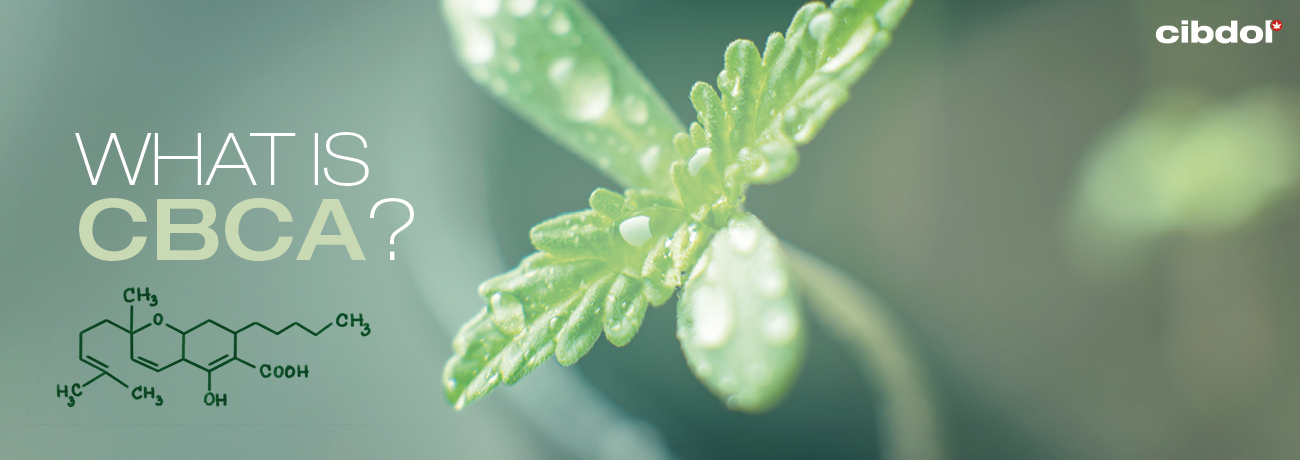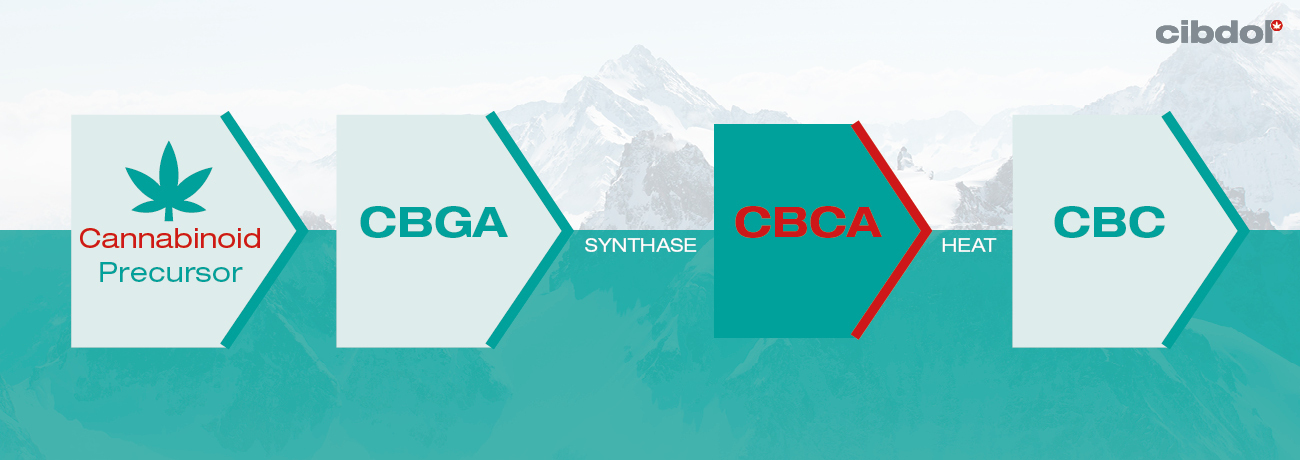What Is CBCA?

CBCA serves as a chemical precursor to CBC, one of over 100 cannabinoids created in the cannabis plant. Little research has explored the full potential of CBCA, yet the molecule may hold great promise in the future of cannabinoid science, much like other members of this vast and complex chemical family.
Summary of CBCA
More specifically categorised as a cannabinoid acid, CBCA (cannabichromenic acid) represents a step in the biosynthetic pathway from precursor molecules to “activated" cannabinoids. What makes a cannabinoid acid different from a cannabinoid? The former features an additional carboxyl group that allows it to exert different effects in the body.
Just like most cannabinoids created through enzymatic reactions, CBCA stems from the “mother cannabinoid” CBGA. A specialised enzyme known as cannabichromenic acid synthase (CBCAS) catalyses a reaction[1] that turns CBGA into CBCA. The cannabinoid acid then acts as a precursor to two other cannabinoids.
The removal of carbon dioxide through heat exposure—decarboxylation[1]—converts CBCA into the cannabinoid CBC. Exposure to UV rays instead turns CBCA into cannabicycloclic acid (CBLA). Both of these end products can later convert into cannabicyclol[1] (CBL) through similar processes.
Although CBC comes second in this reaction, researchers identified the cannabinoid first in 1966, two years prior to the chemical isolation of CBCA. CBC ranks as one of four major phytocannabinoids, alongside THC, CBD, and CBG. However, these three counterparts are produced in varying quantities[2] in the trichomes of cannabis flowers.
Interestingly, CBC starts to form in cannabis plants before the flowering stage even begins. CBC appears at peak levels shortly after the seedling phase[2], meaning the enzymatic conversion of CBCA into CBC occurs very early on in the growing cycle. Even during peak production, CBC levels rarely exceed 0.2–0.3% by dry weight in most strains[2].
CBC-like compounds occur elsewhere in the plant kingdom. Molecules extremely close in molecular structure to the cannabinoid have been identified in the traditional Chinese plant species[3]Rhododendron anthopogonoides.

Side effects
Researchers haven't spent much time looking into the side effects of CBCA, most likely due to its low concentrations in cannabis cultivars and to research restrictions on the plant. However, they have invested time and effort into examining the properties of CBC itself.
No evidence currently shows CBC to produce any notable side effects. Although, we’ll need to wait for future studies to determine if the same applies to CBCA.
Research on CBCA and possible uses
Researchers have investigated several members of the cannabinoid family for their potential in humans. CBCA hasn’t received much attention yet, but we’re sure that will change—especially after encouraging findings regarding the cannabinoid acids CBDA and THCA.
So far, we can only look to CBC for an idea of the qualities CBCA might possess. Early research suggests the cannabinoid may exert some useful properties[4].
CBC may produce these effects[4] by acting on the CB2 receptor of the endocannabinoid system and by interacting with TRP channels. CBC has a weak binding affinity with the CB1 receptor, meaning it generates no psychoactive side effects. CBCA likely shares this non-psychoactive trait.
Legal status
Most drug legislation doesn’t touch on CBCA. No isolated commercial products or high-CBC strains of cannabis currently exist on the market. However, the legality of CBCA will likely fluctuate in the future based on the legality of cannabis and hemp. The United Nations Convention on Psychotropic Substances—an international treaty designed to control certain substances—makes no mention of CBCA.
[1] Degenhardt, F., Stehle, F., & Kayser, O. (2017). The Biosynthesis of Cannabinoids. Handbook of Cannabis and Related Pathologies, 13–23. https://doi.org/10.1016/b978-0-12-800756-3.00002-8 [Source]
[2] Pollastro, F., Caprioglio, D., del Prete, D., Rogati, F., Minassi, A., Taglialatela-Scafati, O., Munoz, E., & Appendino, G. (2018). Cannabichromene. Natural Product Communications, 13(9), 1934578X1801300. https://doi.org/10.1177/1934578x1801300922 [Source]
[3] Iwata, N., & Kitanaka, S. (2011). New Cannabinoid-Like Chromane and Chromene Derivatives from Rhododendron anthopogonoides. Chemical and Pharmaceutical Bulletin, 59(11), 1409–1412. https://doi.org/10.1248/cpb.59.1409 [Source]
[4] Russo, E. B., & Marcu, J. (2017). Cannabis Pharmacology: The Usual Suspects and a Few Promising Leads. Cannabinoid Pharmacology, 67–134. https://doi.org/10.1016/bs.apha.2017.03.004 [Source]
[1] Degenhardt, F., Stehle, F., & Kayser, O. (2017). The Biosynthesis of Cannabinoids. Handbook of Cannabis and Related Pathologies, 13–23. https://doi.org/10.1016/b978-0-12-800756-3.00002-8 [Source]
[2] Pollastro, F., Caprioglio, D., del Prete, D., Rogati, F., Minassi, A., Taglialatela-Scafati, O., Munoz, E., & Appendino, G. (2018). Cannabichromene. Natural Product Communications, 13(9), 1934578X1801300. https://doi.org/10.1177/1934578x1801300922 [Source]
[3] Iwata, N., & Kitanaka, S. (2011). New Cannabinoid-Like Chromane and Chromene Derivatives from Rhododendron anthopogonoides. Chemical and Pharmaceutical Bulletin, 59(11), 1409–1412. https://doi.org/10.1248/cpb.59.1409 [Source]
[4] Russo, E. B., & Marcu, J. (2017). Cannabis Pharmacology: The Usual Suspects and a Few Promising Leads. Cannabinoid Pharmacology, 67–134. https://doi.org/10.1016/bs.apha.2017.03.004 [Source]







